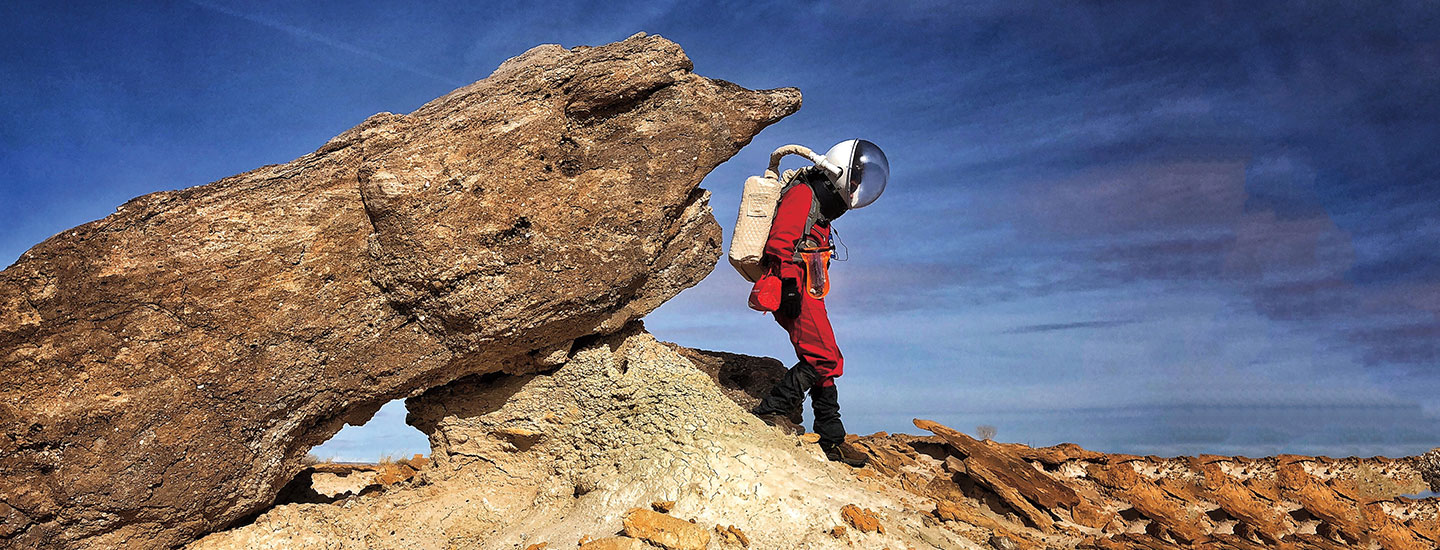Beep! My alarm goes off. I know it must be 8:00 a.m. even though it’s pitch-black in my windowless room. I sit up in bed and knock my head into the ceiling. I had to sleep on the top bunk (again!).
I am not a morning person, but today is an EVA day—short for extra vehicular activity—and I need to get ready to explore the surface of Mars. Well, not actually Mars . . . . No human has stepped foot there yet. I’m actually at the Mars Desert Research Station (MDRS). MDRS is a facility in Utah run by The Mars Society to help study the science, technology, and other factors needed to send humans to Mars.
My alarm goes off. I know that means it’s 8:00 a.m. But it's pitch-black in my windowless room. I sit up in bed and knock my head into the ceiling. I had to sleep on the top bunk (again!).
I am not a morning person. But today is an EVA day. That’s short for extra vehicular activity. I need to get ready to explore the surface of Mars! Well, OK, not actually Mars. No human has stepped foot on that planet yet. I'm actually at the Mars Desert Research Station (MDRS). MDRS is a facility in Utah run by the Mars Society. People like me go there to study the science and technology needed to send humans to Mars eventually.

